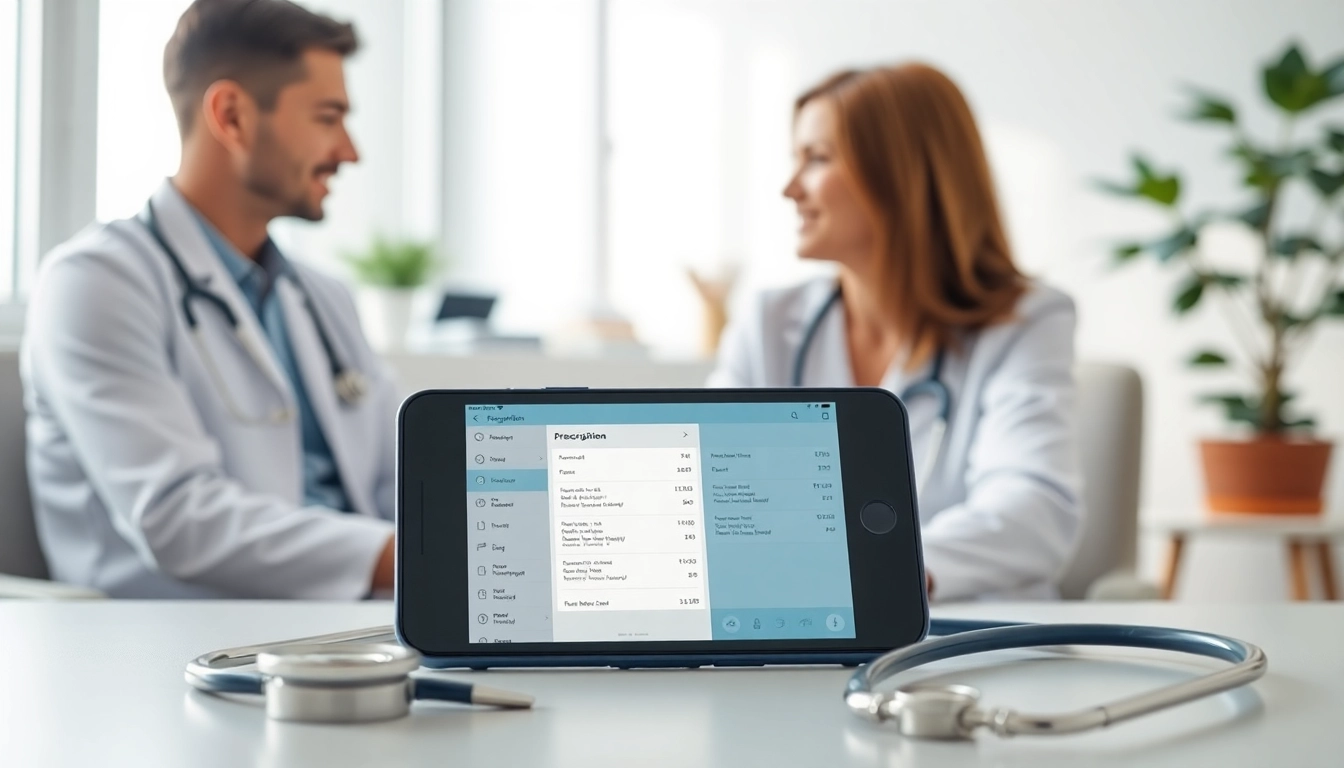Understanding Integrating ePrescribing Systems
As healthcare continues to evolve with technological advancements, integrating eprescribing systems has emerged as a critical component for enhancing patient care. ePrescribing, or electronic prescribing, allows the direct electronic transmission of prescriptions from healthcare providers to pharmacies, significantly improving the prescribing process. In this article, we’ll explore the intricacies of integrating ePrescribing systems, their importance, challenges, benefits, key features, implementation strategies, and how to measure success.
What are ePrescribing Systems?
ePrescribing systems are digital solutions that replace traditional paper-based prescriptions. These systems enable healthcare providers to create, send, and manage prescriptions electronically. By facilitating direct communication between the prescriber and the pharmacy, ePrescribing systems help streamline the process of medication management.
Features of ePrescribing systems include:
- Electronic submission of prescriptions to pharmacies
- Access to patients’ medication history
- Drug interaction checks and allergy alerts
- Prescription tracking and management tools
These functionalities not only simplify the prescription process but also enhance safety and accuracy in medication delivery.
Importance of Integration in Healthcare
Integrating ePrescribing systems with other healthcare technologies, such as Electronic Health Records (EHR), is essential for creating a cohesive healthcare environment. Integration promotes seamless data exchange and improves overall patient care. Such connectivity ensures that healthcare providers have access to up-to-date patient information, which is vital for making informed prescribing decisions.
The role of integration extends beyond mere data sharing; it facilitates better coordination among various healthcare stakeholders, including pharmacies, specialists, and primary care providers. In a world where time and accuracy are paramount, integrating ePrescribing systems can significantly reduce waiting periods for patients and mitigate potential medication errors.
Common Challenges in Integrating ePrescribing Systems
Despite the many advantages of integrating ePrescribing systems, there are several challenges healthcare organizations may face:
- Interoperability Issues: Different systems may use various standards and protocols, making it difficult to achieve seamless data exchange.
- Resistance to Change: Healthcare providers may be hesitant to adopt new technologies due to unfamiliarity or concerns about disruption to their workflows.
- Costs and Resources: Initial implementation costs and ongoing maintenance can be significant barriers, especially for smaller practices.
- Regulatory Compliance: Navigating the complex landscape of healthcare regulations and ensuring compliance can be challenging.
Understanding these challenges is essential for devising effective strategies for successful integration.
Benefits of Integrating ePrescribing Systems
Improving Patient Safety and Medication Accuracy
One of the most significant benefits of integrating ePrescribing systems is the enhancement of patient safety. By eliminating handwritten prescriptions, the likelihood of errors due to misreading or misinterpretation is drastically reduced. ePrescribing systems also provide decision support tools that alert prescribers to potential drug interactions, allergies, and other critical patient data.
Additionally, having immediate access to a patient’s medication history helps providers make informed decisions, further minimizing the risk of adverse drug events.
Efficiency Boosts in Prescription Fulfillment
Integrating ePrescribing into healthcare workflows leads to increased efficiency in prescription fulfillment. With electronic prescriptions, the entire process—from writing to sending to receiving—becomes streamlined. This efficiency translates to quicker turnaround times for patients who need their medications, ultimately improving satisfaction levels and adherence to treatment.
Moreover, integrating these systems can reduce phone calls between pharmacies and healthcare providers, allowing staff to focus on more critical tasks and patient interactions.
Enhancing Communication Among Healthcare Providers
Effective communication is at the heart of quality patient care. By integrating ePrescribing within a broader electronic health ecosystem, healthcare providers can share pertinent information regarding medications among themselves. This communication can enhance collaboration and ensure everyone involved in a patient’s care is informed about their current medications, which is vital for coordination between various specialties.
Additionally, when pharmacies have immediate access to prescriptions, they can provide feedback to providers if there are issues or concerns, fostering an environment of proactive care.
Key Features of Effective ePrescribing Integration
Interoperability with Electronic Health Records
The ability to integrate ePrescribing systems with EHRs is fundamental to ensuring that all healthcare data is centralized and accessible. Interoperability allows for real-time updates to a patient’s medication list, making it easier for providers to prescribe accurately. By accessing comprehensive patient profiles, providers can review allergies, medication histories, and potential drug interactions directly within their prescribing interface.
User-Friendly Interfaces for Healthcare Providers
An effective ePrescribing system must feature an intuitive interface that healthcare providers can navigate easily. User-friendly designs reduce the learning curve and improve adoption rates among healthcare staff. Features like customizable dashboards, simple navigation, and quick access to frequently used functions contribute significantly to enhancing the user experience.
Moreover, systems that provide mobile access enable prescribers to manage patient medications on-the-go, further increasing accessibility and continuity of care.
Patient Engagement and Experience Enhancements
Integrating ePrescribing systems not only benefits healthcare providers but also enhances the patient experience. Patients can receive electronic notifications regarding their prescriptions, such as when to take their medications, potential side effects, or alerts about refills. This level of engagement encourages adherence and fosters a collaborative provider-patient relationship.
Moreover, patients often appreciate the ability to manage their prescriptions through patient portals, where they can request refills, view their medication lists, and communicate with their healthcare providers more effectively.
Steps to Implementing Integrating ePrescribing Systems
Assessing Current Systems and Gaps
Before implementing an integrated ePrescribing system, organizations must evaluate their existing infrastructure, processes, and technology. Identifying current challenges and gaps in the workflow is vital for tailoring the integration process to fit specific needs. Consider conducting a thorough audit of existing processes, user feedback, and technology capabilities to pinpoint areas for improvement.
Additionally, organizations should assess their staff’s readiness to adopt new systems and determine if training will be needed to ensure a smooth transition.
Choosing the Right Integration Partner
Selecting a reliable partner for the integration process is critical. Organizations should seek vendors who have demonstrated experience in ePrescribing and whose systems offer interoperability features compatible with existing EHRs. It’s essential to evaluate potential partners based on their track record, customer support, compliance with regulatory requirements, and ongoing maintenance capabilities.
Involving healthcare providers in the selection process can also help ensure that the chosen platform meets the specific needs of the user base.
Training and Support for Providers
Once an ePrescribing system is selected, comprehensive training and ongoing support are crucial to successful adoption. Offering training sessions on how to navigate the system, utilize its features effectively, and troubleshoot issues will empower providers and staff to feel comfortable using the new technology.
Furthermore, establishing a support system to address ongoing questions or concerns can help maintain confidence in the system and enhance its usage rates for years to come.
Measuring the Success of Integrating ePrescribing Systems
Key Performance Indicators to Monitor
To gauge the effectiveness of integrating ePrescribing systems, organizations should identify and monitor key performance indicators (KPIs). KPIs might include prescription error rates, prescribing efficiency (the time taken to complete a prescription), and the percentage of electronic prescriptions versus paper prescriptions. Tracking these metrics helps assess improvements in patient safety, workflow efficiency, and the adoption rate of the new system.
Patient Feedback and Experience Metrics
In addition to performance metrics, gathering patient feedback is essential to understanding how the new system impacts their experience. Surveys and focus groups can provide insights into patient satisfaction levels, perceived communication effectiveness, and overall sentiment regarding their medication management. Analyzing this feedback not only helps in fine-tuning the ePrescribing process but can also identify potential areas for further improvement.
Continuous Improvement Strategies
Integrating ePrescribing systems is not a one-time effort; it requires ongoing assessment and refinement. Organizations should establish a continuous improvement process where data is regularly reviewed, and feedback loops are integrated to make necessary adjustments. This iterative approach ensures that the system remains effective in meeting the evolving needs of both healthcare providers and patients, thus enhancing the overall quality of care.



